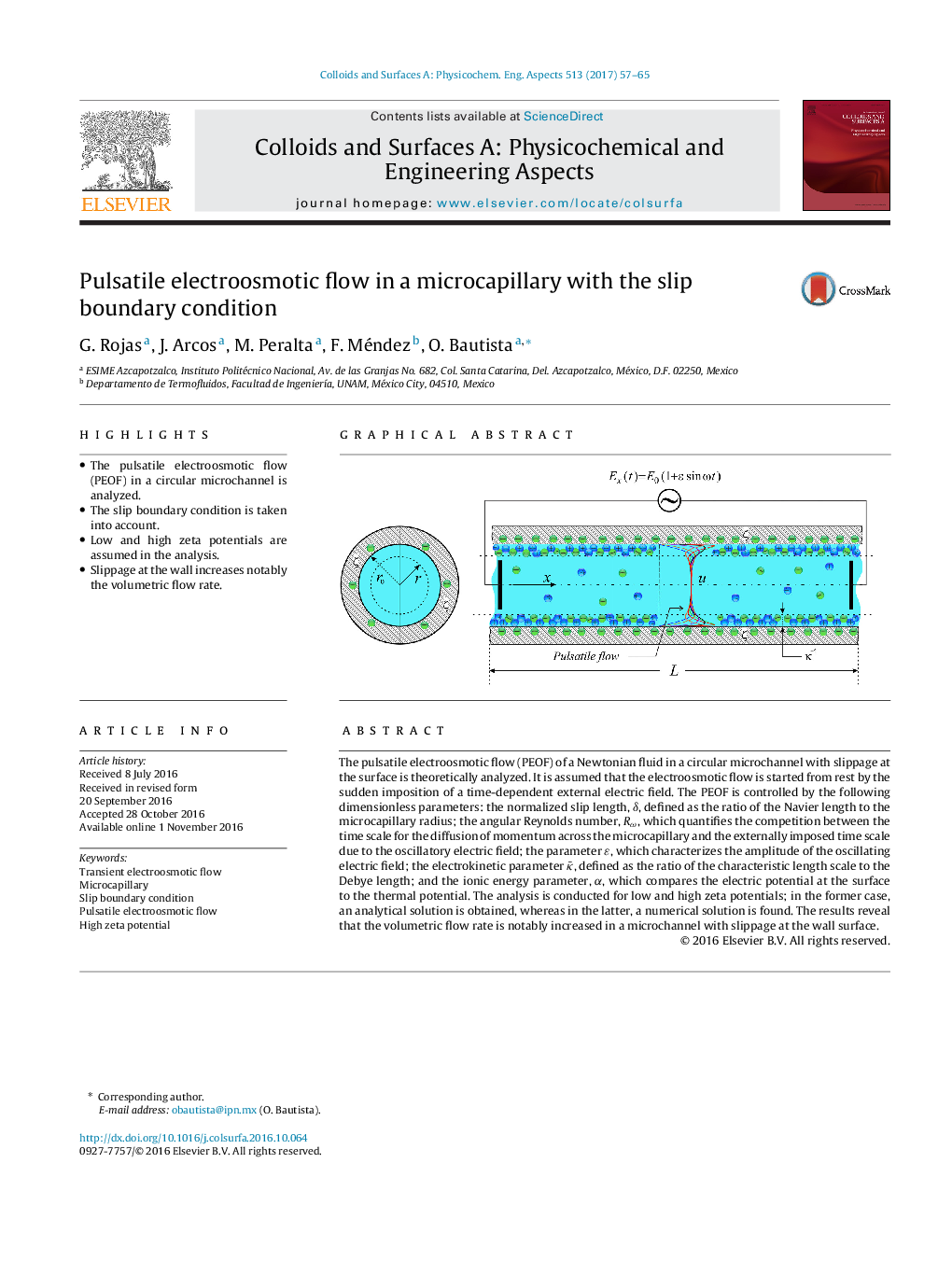| Article ID | Journal | Published Year | Pages | File Type |
|---|---|---|---|---|
| 4982533 | Colloids and Surfaces A: Physicochemical and Engineering Aspects | 2017 | 9 Pages |
â¢The pulsatile electroosmotic flow (PEOF) in a circular microchannel is analyzed.â¢The slip boundary condition is taken into account.â¢Low and high zeta potentials are assumed in the analysis.â¢Slippage at the wall increases notably the volumetric flow rate.
The pulsatile electroosmotic flow (PEOF) of a Newtonian fluid in a circular microchannel with slippage at the surface is theoretically analyzed. It is assumed that the electroosmotic flow is started from rest by the sudden imposition of a time-dependent external electric field. The PEOF is controlled by the following dimensionless parameters: the normalized slip length, δ, defined as the ratio of the Navier length to the microcapillary radius; the angular Reynolds number, RÏ, which quantifies the competition between the time scale for the diffusion of momentum across the microcapillary and the externally imposed time scale due to the oscillatory electric field; the parameter É, which characterizes the amplitude of the oscillating electric field; the electrokinetic parameter κ¯, defined as the ratio of the characteristic length scale to the Debye length; and the ionic energy parameter, α, which compares the electric potential at the surface to the thermal potential. The analysis is conducted for low and high zeta potentials; in the former case, an analytical solution is obtained, whereas in the latter, a numerical solution is found. The results reveal that the volumetric flow rate is notably increased in a microchannel with slippage at the wall surface.
Graphical abstractDownload high-res image (403KB)Download full-size image
